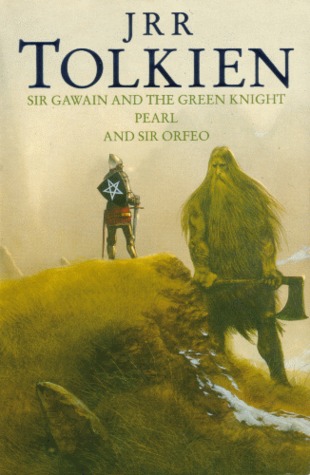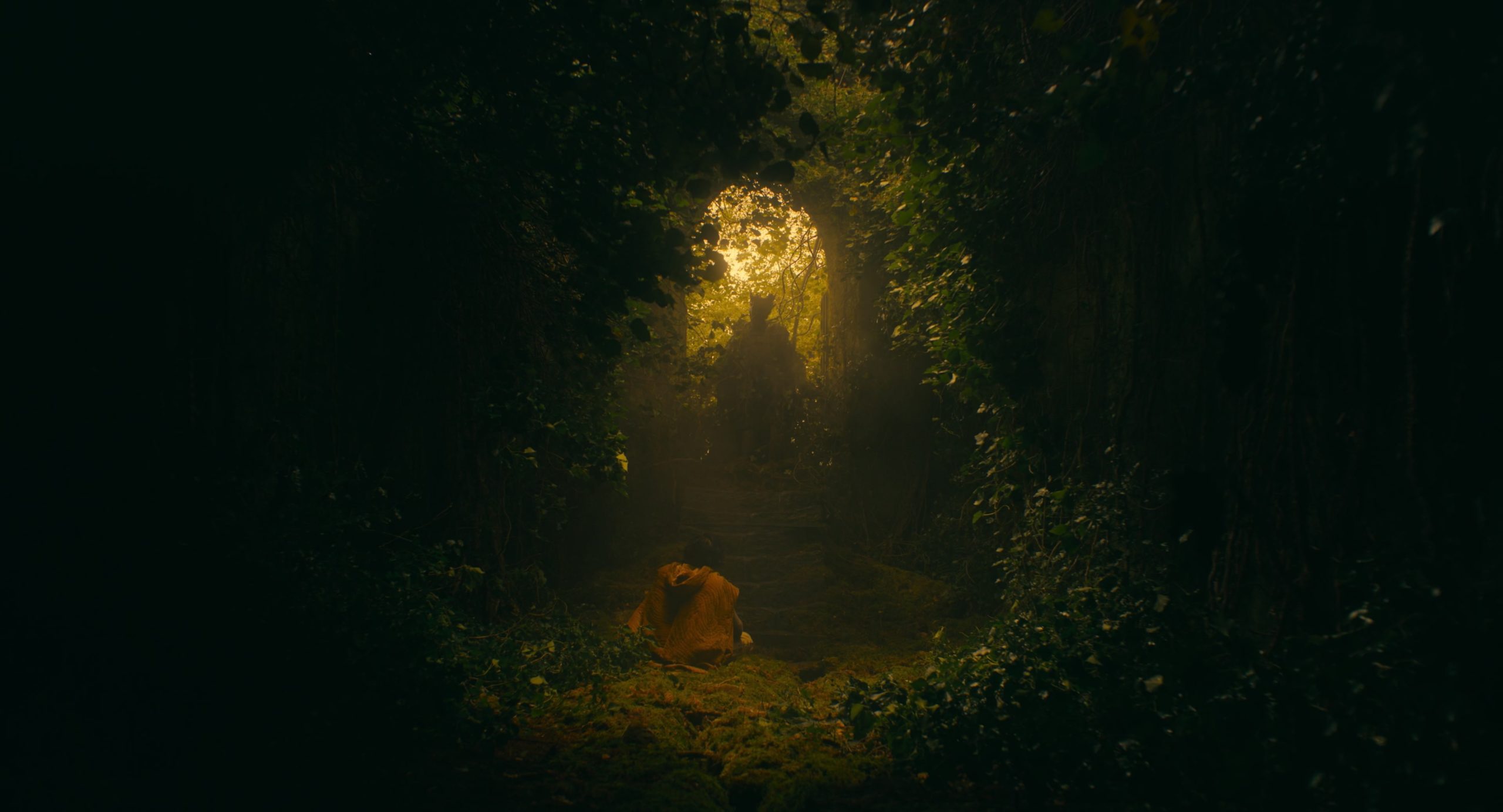The A24 film The Green Knight puts a dark fantasy spin on the 700-year-old myth of Gawain and the Green Knight. I loved it, but it isn’t for everyone. The movie does a lot of storytelling through imagery, mood, and symbolism that I’d like to dissect.
Minor spoilers follow.
First, the movie does not hold your hand. King Arthur, Guinevere, Merlin, and Morgan Le Fey all appear, but none of them are named. This could be because the story draws on similar Celtic myths, where these characters have different names. Giving them titles instead of names does instill a certain timelessness to the roles.

It’s not known who wrote Sir Gawain and the Green Knight in the 14th century, but in the 1920s, linguistics professor and occasional novelist J.R.R. Tolkien translated the work (and some of that poet’s other works) from Middle English to modern English.
Gawain and the Green Knight is a bildungsroman, a German term for a coming-of-age novel where a naïve youth takes a literal and spiritual journey of self-discovery that puts personal and societal values in conflict. Other bildungsromans include Harry Potter, To Kill a Mockingbird, and Dune.
Like the 1981 Excalibur film and the 80s Robin of Sherwood BBC show before it, The Green Knight plays with paganism, Christian colonization, and the death of magic & mystery. In the film, King Arthur and the Knights of the Round Table wear pentagram amulets that symbolize symbolize five knightly virtues or wounds of Christ. The unknown poet credits it to King Solomon’s seal, a magic ring to bind demons. Meanwhile, Arthur’s crown alludes to the halo that sits atop the heads of Jesus, Mary, and various saints. That halo recurs throughout Byzantine and Renaissance art.
The poem describes Sir Gawain’s coat of arms in detail: a golden “pentangle” in an “endless knot” on a red shield. In The Green Knight, Gawain isn’t yet a knight, so he has no amulet. His shield is different (it looks like religious iconography), but it’s broken on his journey.
Eager to earn knighthood with one brave deed, Gawain decapitates the Green Knight who issues a challenge as a “Christmas game.” Throughout the film we see interesting color symbolism. Green and red sit opposite each other on the color wheel, but The Green Knight uses red sparingly, even though it’s Gawain’s signature color in the poem.
There are no red-and-green Christmas decorations. The only red we see is the occasional blood, and unusual lighting in a scene where Dev Patel dives underwater. We see far more of the color orange, green’s complement on the color wheel. (That’s why you see green and orange together for Aquaman and the University of Florida.)
Gawain wears orange cloaks, repeatedly encounters an orange fox, and wanders through an orange miasma late in his journey. He does not oppose the Green Knight — he complements him.
This movie is full of tension and threats of violence, but there is not a single “action scene” in it. We’re a far cry from Sword of the Valiant (1984), starring Sean Connery as the Green Knight. Other stories describe verdant mystics: The Green Man, Herne the Hunter, and even a Quranic figure al-Khadir, “the Green One.” (Herne tells Robin Hood he’s a sacred protector of the land in that BBC show. Sean Connery’s son Jason took a turn as Robin there. Full circle!)
The Green Knight demands that “one year hence,” Gawain journeys to his Green Chapel to repay the blow. Dev Patel avoids it, drinking and bedding his prostitute girlfriend who wishes to become his proper lady, until Gawain’s King demands he depart. His honor is repeatedly tested.
I’ll spare you details of the journey and its ending. But we spend the whole film wondering what honor means to our protagonist. These beheadings and questions of honor remind me of Harakiri (1962), a criterion collection jidaigeki that explores cruelty in samurai inflexibility.
A24 has some favorite actors: the Green Knight and the Queen were in The Witch. Dev Patel’s lover is the feminine AI from Ex Machina. The boyish man from Killing of a Sacred Deer is here, aloofly sinister as always. And fun trivia: Joel Edgerton was Gawain in King Arthur (2004).
I saw #TheGreenKnight with @josephoforb; it was my first time seeing him, and my first movie, since before the pandemic. It was nice; I grew up going to the movies to see EVERYTHING with him. I’m thrilled this one’s nearly recouped its $15m budget in trying times.
I also bought the Green Knight tabletop RPG designed by @TimmWoods, and I’ll be digging into that soon too. Like the film, its rules are airy, thematic, and narrative-driven. @A24 fans, it’s loaded with Easter eggs for their other films.
